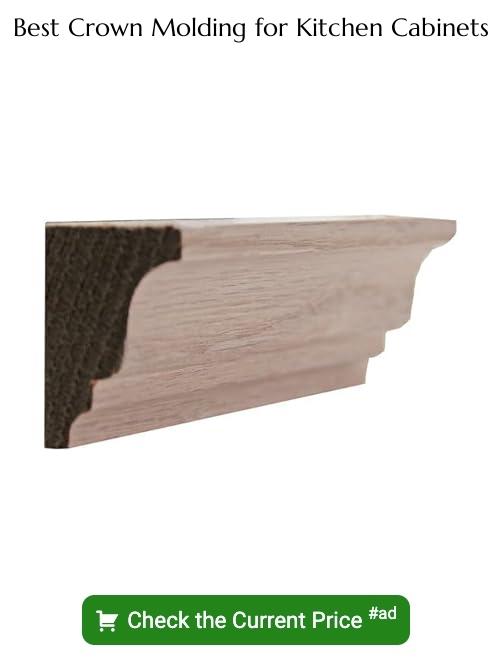Last updated on
Discover the perfect size crown molding to enhance your kitchen cabinets and elevate your space’s aesthetic appeal in our comprehensive guide.
Crown molding is a beautiful and timeless way to add elegance and sophistication to any room. When it comes to kitchen cabinets, crown molding can take your space from ordinary to extraordinary.
However, choosing the right size of crown molding for your kitchen cabinets can be a daunting task. You want something that will complement the style of your cabinets without overwhelming them or looking out of place.
In this article, we will guide you through the process of selecting the perfect size crown molding for your kitchen cabinets so that you can achieve the look you desire with ease. So let’s get started!
What's Inside
Understanding Crown Molding

Crown molding is a decorative trim that adds an elegant touch to any room. It’s typically installed where the ceiling meets the wall, creating a seamless transition between the two surfaces.
Crown molding comes in various sizes and styles, making it easy to find one that complements your kitchen cabinets’ design.
Understanding crown molding is essential when selecting its size for your kitchen cabinets. The most important thing to consider is proportionality; you want your crown molding to be proportional in size and style with both your cabinet height and overall kitchen aesthetic.
It’s also crucial to understand how different materials can affect the look of crown moldings on cabinets. Wood, plaster, polyurethane foam are some popular options available in today’s market.
Importance of Proportion
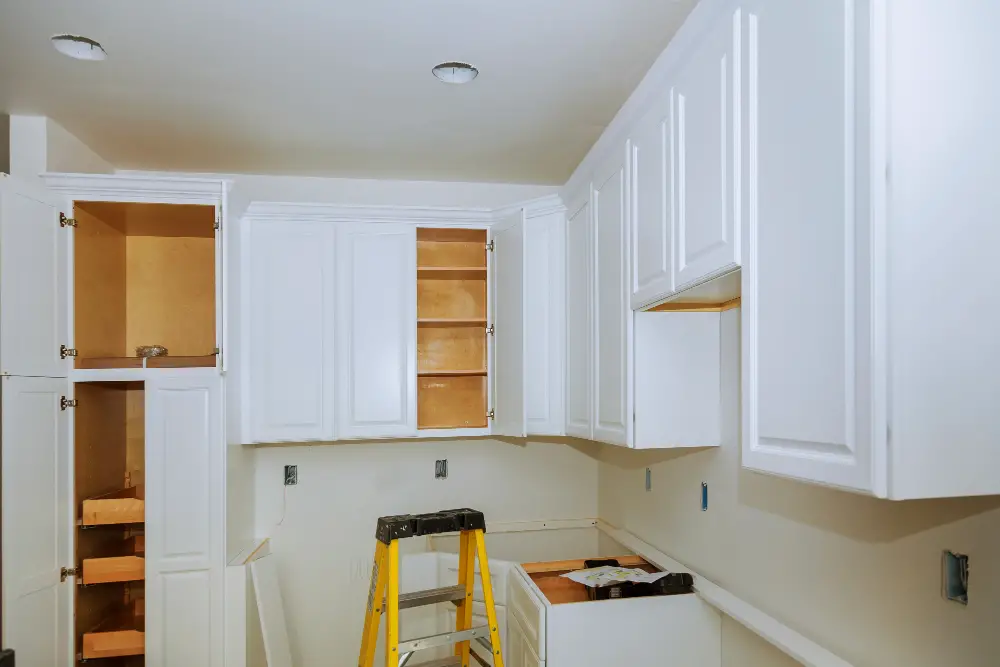
The right size of crown molding can enhance the beauty and elegance of your cabinets while an ill-fitting one can make them look awkward and out of place. It’s important to consider both the height and style of your cabinets when choosing a crown molding size that will complement them perfectly.
For instance, if you have tall kitchen cabinets with a lot of vertical space between them and the ceiling, you may want to opt for wider or more elaborate moldings that will fill up this space without looking too overwhelming. On the other hand, if you have shorter or simpler cabinetry designs with less vertical space above them, smaller or simpler moldings may be more appropriate.
In addition to cabinet height considerations, it’s also essential to think about how well-matched your chosen crown molding is in terms of style and design aesthetics. You don’t want something too ornate on simple shaker-style cabinetry nor do you want something too plain on intricate raised-panel doors.
Popular Crown Molding Styles
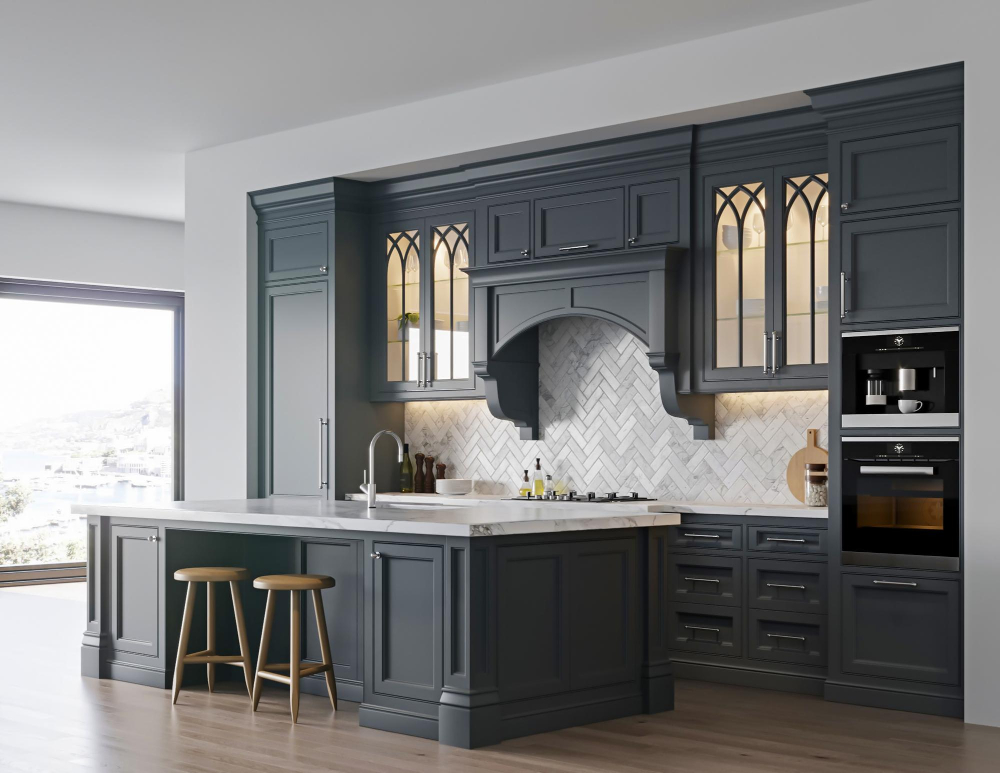
Some popular crown molding styles include traditional, contemporary, colonial, and Victorian.
Traditional crown moldings are characterized by their ornate designs with intricate details such as scrolls or leaves. They work well with classic cabinet designs like raised panel doors or shaker-style cabinets.
Contemporary crown moldings have clean lines and simple profiles that complement modern kitchen aesthetics. These types of moldings typically feature straight edges without any embellishments.
Colonial style is another popular option for those who prefer a more rustic feel to their kitchens. Colonial-style crown molding features simple yet elegant curves that add warmth to any space.
Victorian style is perfect for those looking for an opulent touch to their kitchens’ design elements. This type of molding features elaborate patterns with detailed carvings that create an extravagant look when paired with richly colored cabinetry finishes.
Measuring Cabinet Height
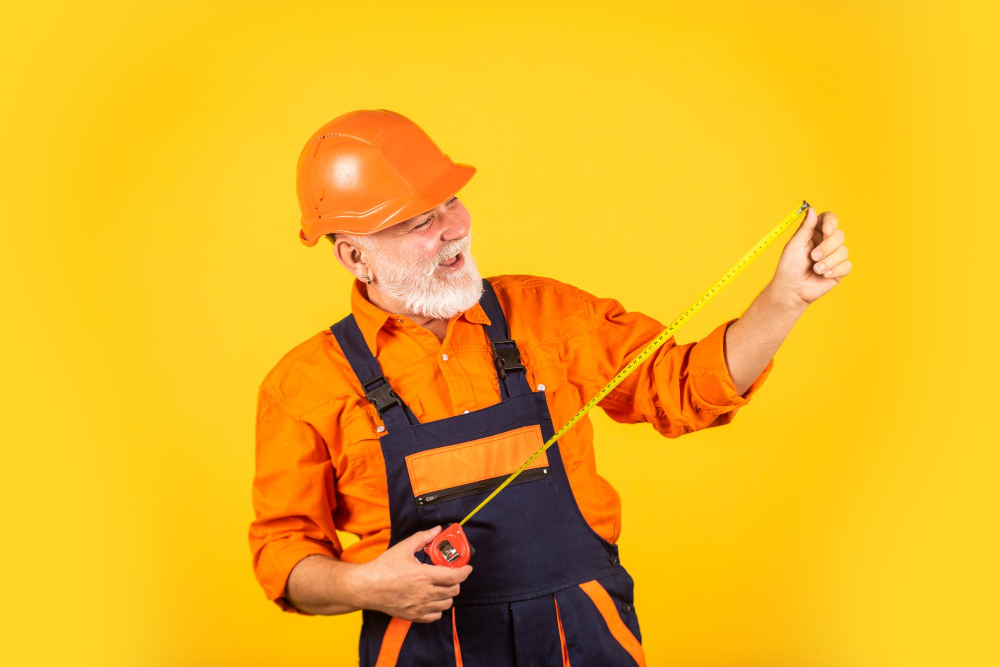
Measuring cabinet height is a crucial step in selecting the right size crown molding as it will help you avoid any mistakes that could lead to an unbalanced or disproportionate look.
When measuring cabinet height, start from where the top of your base cabinets meets with the wall and measure up to where your upper cabinets end. It’s important to take accurate measurements as even a slight difference can affect how well-fitted and visually appealing your crown molding will be.
If you have varying heights among different sections of cabinetry in one area, consider using different sizes or styles for each section instead of trying to force one uniform style throughout. This approach can create visual interest while still maintaining balance within each section.
Once you have measured accurately, use those dimensions when choosing what size crown molding would work best with both aesthetic appeal and proportionality in mind.
Cabinet Style and Design

The cabinet’s style can significantly impact how well a particular size of crown molding will complement it. For instance, if you have traditional-style cabinetry with intricate details and ornate carvings, a larger-sized crown molding would be more appropriate to match its grandeur.
On the other hand, if you have modern or contemporary-style cabinetry with clean lines and minimalistic designs, smaller-sized crown moldings would work better as they won’t overpower or clash with their sleek aesthetics.
It is essential to keep in mind that while choosing a suitable size for your kitchen cabinet’s crown molding is crucial; it should also blend seamlessly into your overall kitchen design scheme.
Matching Kitchen Aesthetics
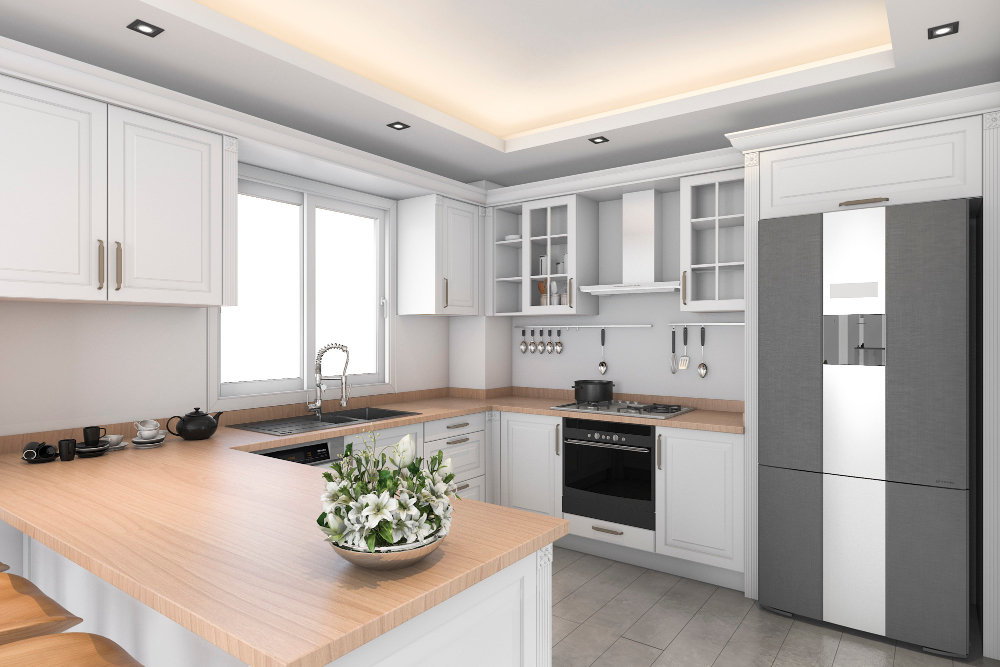
The crown molding should complement and enhance the existing design elements in your space. If you have a modern or minimalist kitchen, choose a simple and sleek style of crown molding that won’t overpower other design features.
On the other hand, if you have a traditional or classic-style kitchen with ornate cabinetry and decorative details, opt for more elaborate styles of crown moldings such as dentil or egg-and-dart patterns.
It’s also important to match materials when choosing crown moldings. For example, if you have wooden cabinets in cherry wood finish then go for matching wooden crowns instead of metallic ones.
Material Options
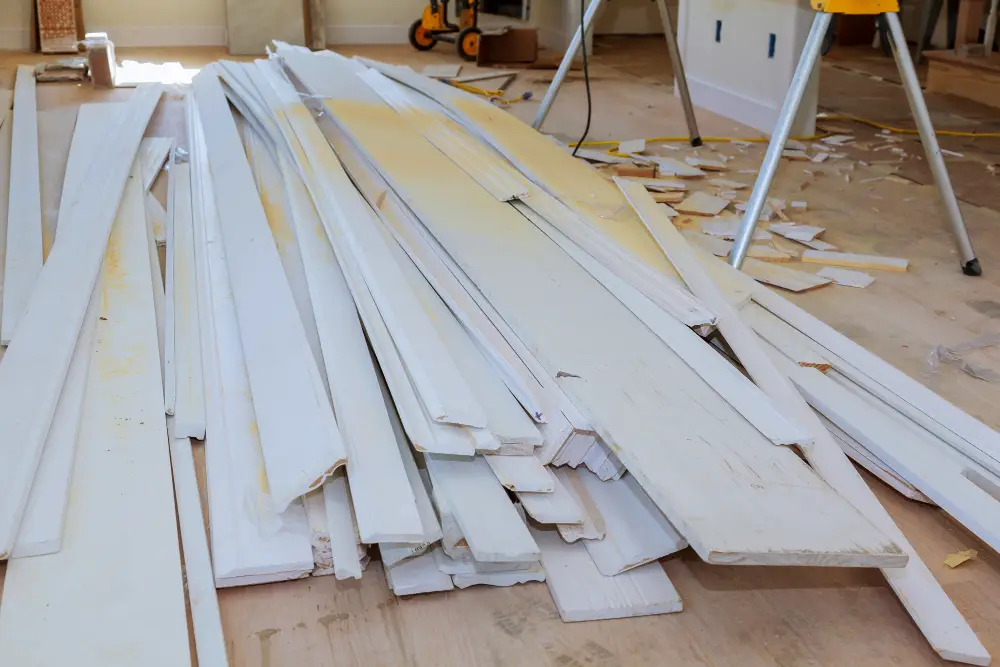
The most popular materials include wood, MDF (medium-density fiberboard), and polyurethane. Wood is a classic choice that offers natural beauty and durability but can be more expensive than other options.
MDF is an affordable alternative that can mimic the look of real wood without breaking the bank. Polyurethane is another option that provides a lightweight yet sturdy solution with intricate designs.
Choosing the right material for your crown molding will depend on your budget, style preferences, and maintenance requirements. If you’re looking for something timeless and elegant with minimal upkeep needs, then wood may be the best choice for you.
On the other hand, if affordability or ease of installation are top priorities in your decision-making process then MDF or polyurethane might be better suited to meet those needs.
Width and Depth Considerations
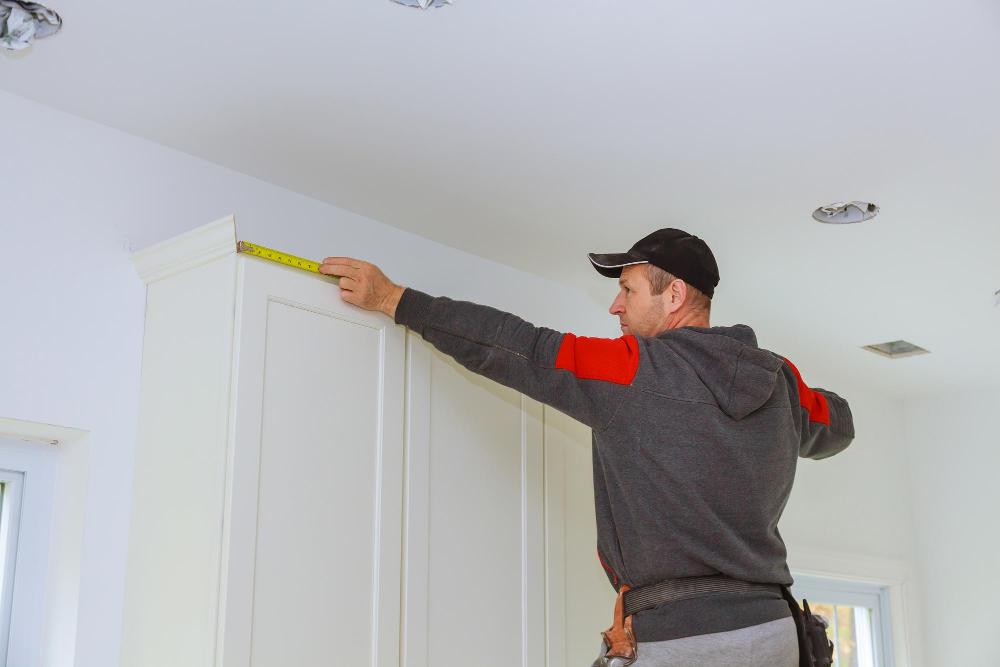
The width of the crown molding should be proportional to the height of your cabinets. If you have tall cabinets, wider crown moldings will look more balanced and visually appealing.
On the other hand, if you have shorter or standard-sized cabinets, narrower moldings may be a better fit.
Depth is another important factor to consider when choosing a size for your crown molding. A deeper profile can add more visual interest and create an illusion of greater height in smaller kitchens with lower ceilings.
It’s essential to keep in mind that while wider or deeper profiles may look stunning on their own, they might not always complement every cabinet style or design aesthetic equally well. Therefore it’s best practice first to determine what type of style suits your kitchen before deciding on any specific dimensions.
How To Determine Crown Molding Size For Cabinets

First, measure the height of your cabinets from top to bottom. This measurement will help you decide on the appropriate width and depth of crown molding that will complement your cabinet’s style and design.
Next, take into account the overall aesthetics of your kitchen. If you have a modern or minimalist kitchen design with clean lines and simple cabinetry, then a narrow crown molding may be more suitable than a wider one.
On the other hand, if you have traditional or ornate cabinetry with intricate details and embellishments such as raised panels or decorative moldings already present in them; then choosing a wider crown molding can enhance their beauty further.
It is also essential to match materials used in both cabinet construction and trim work when selecting Crown Molding sizes for Kitchen Cabinets. For example: if wood is used throughout all aspects (cabinets & trim), it would make sense only to use wooden crowns rather than mixing metals like brass which could clash against natural woods’ warm tones.
Crown Molding Sizes For Kitchen Cabinets

The size of your cabinets and the height of your ceiling will play a significant role in determining the appropriate size of crown molding. Generally, smaller kitchens with lower ceilings look best with narrower moldings while larger kitchens with higher ceilings can handle wider moldings.
The most common sizes for crown molding on kitchen cabinets range from 2-1/4 inches to 3-1/2 inches in width and depth. However, this is not set in stone as some homeowners prefer more substantial or thinner profiles depending on their personal taste.
It’s essential to keep proportionality in mind when selecting the right size for your cabinet’s crown molding. A too-small or too-large piece can throw off balance and make everything look awkwardly out-of-place.
Tips for Choosing Size

First and foremost, consider the style of your cabinets. If you have traditional or ornate cabinetry, a larger crown molding may be more appropriate to match its grandeur.
On the other hand, if you have modern or minimalist cabinetry with clean lines and simple designs, a smaller crown molding would complement it better.
Another important factor is proportionality. The size of your kitchen should also play into determining what size of crown molding will work best in your space.
A large room with high ceilings can handle bigger moldings without looking out of place while smaller kitchens may require something more subtle.
It’s also essential to take into account any existing architectural features in the room such as beams or archways that could affect how much visual weight is added by adding additional trim like crown moldings.
Installation Process
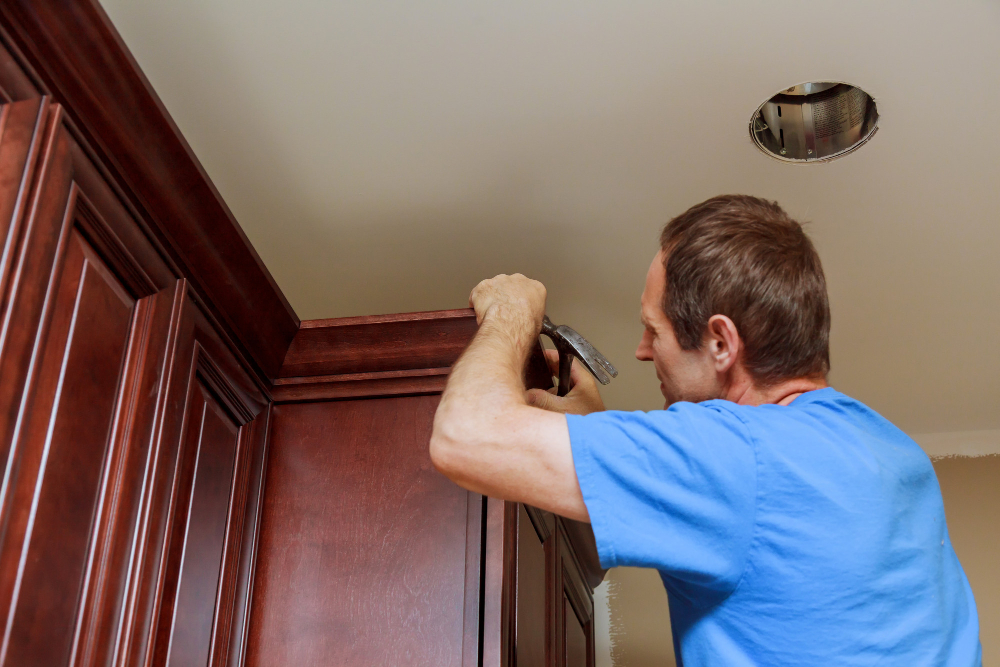
The installation process can be a bit tricky, but with some patience and attention to detail, you can achieve professional-looking results.
Firstly, gather all the necessary tools such as a saw or miter saw (depending on whether you need angled cuts), nails or screws (depending on your preference), adhesive glue and caulking gun. Make sure that everything is within reach before starting.
Next step is measuring and cutting the crown molding pieces according to your cabinet dimensions. It’s important to make precise measurements so that each piece fits perfectly in place without any gaps or overlaps.
After cutting all of the pieces needed for installation, apply adhesive glue along one edge of each piece before attaching it onto its corresponding cabinet surface using nails/screws at regular intervals along its length until secure enough not move around during drying period which usually takes 24 hours minimum depending on humidity levels in your area.
DIY Vs Professional Installation

If you’re considering adding crown molding to your kitchen cabinets, you’ll need to decide whether to tackle the project yourself or hire a professional.
DIY installation is an option if you have some basic carpentry skills and are comfortable using power tools. However, keep in mind that installing crown molding requires precision cutting and measuring, which can be time-consuming and frustrating for beginners.
On the other hand, hiring a professional installer ensures that your crown molding will be installed correctly without any mistakes or mishaps. Professionals have years of experience working with different types of materials and styles of moldings; they also come equipped with specialized tools needed for precise cuts.
What Size Nails For Crown Molding On Cabinets?

Using nails that are too long can cause damage to your cabinets or even split the wood. On the other hand, using nails that are too short may not provide enough support for your crown molding and could result in it falling off.
The most common nail sizes used for installing crown molding on kitchen cabinets range from 1-1/4 inch to 2 inches in length. The exact size you need will depend on several factors such as cabinet material and thickness of both cabinet and moldings.
It’s always a good idea to consult with a professional or follow manufacturer instructions when determining what nail size is best suited for your specific project needs. Make sure you have all necessary tools including a hammer or nail gun before beginning installation.
Budget Considerations

Crown molding can be made from a variety of materials, including wood, MDF (medium-density fiberboard), and polyurethane. The cost of these materials varies greatly, with wood being the most expensive option and polyurethane being the least expensive.
If you’re on a tight budget but still want to add some elegance to your kitchen cabinets with crown molding, consider using MDF or polyurethane options. These materials are more affordable than wood but still offer a beautiful finish that will enhance your space’s aesthetic appeal.
Another way to save money when adding crown molding is by installing it yourself instead of hiring professionals. While this may require some DIY skills and tools like saws or nail guns if you don’t have them already at home; however doing so can save you hundreds or even thousands in installation costs.
Maintenance and Cleaning

This will help keep the moldings looking fresh and new for years to come. The good news is that maintaining crown molding on kitchen cabinets is relatively easy.
To clean your crown molding, use a soft cloth or sponge with warm water and mild soap solution. Avoid using abrasive cleaners or harsh chemicals as they can damage the finish of the moldings.
It’s also important to dust your crown moldings regularly using a soft-bristled brush or microfiber cloth. Dust buildup can make even freshly painted trim look dull over time.
If you notice any scratches or dents in your crown molding, touch them up with paint as soon as possible before they become more noticeable.
Enhancing Kitchen Value
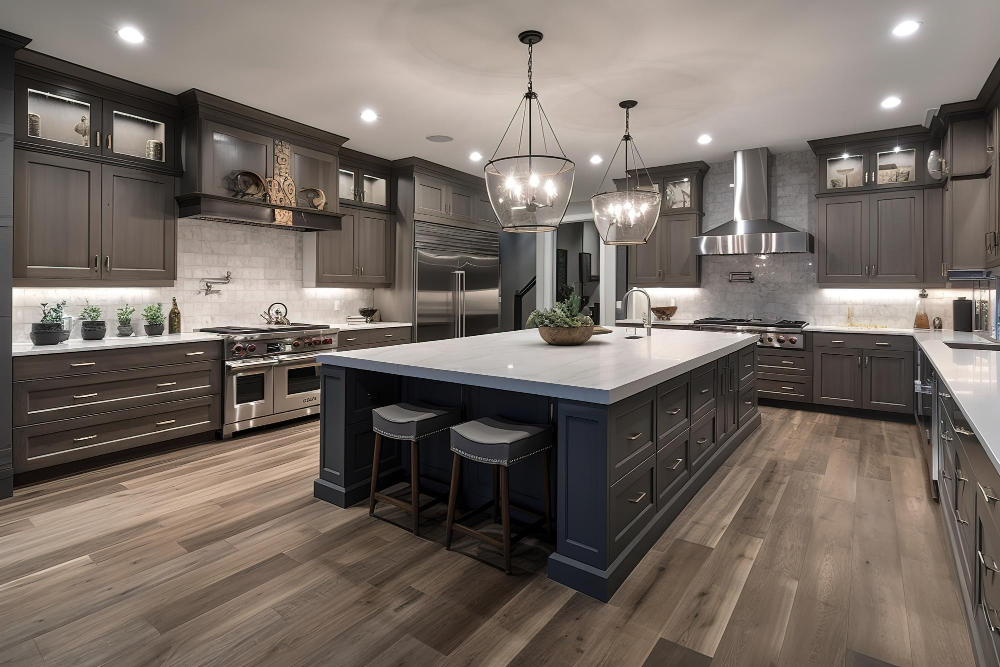
Crown molding adds a touch of elegance and sophistication that potential buyers will appreciate when viewing your property. It’s an affordable upgrade that can make all the difference in how much you’re able to sell for.
If you’re planning on staying in your home for years to come, adding crown molding is still a smart investment as it will elevate the overall look and feel of one of the most important rooms in any house -the kitchen! By choosing just the right size and style for both cabinet design and ceiling height, you’ll be able to create an upscale look without breaking bank or sacrificing functionality.
Crown Molding Alternatives
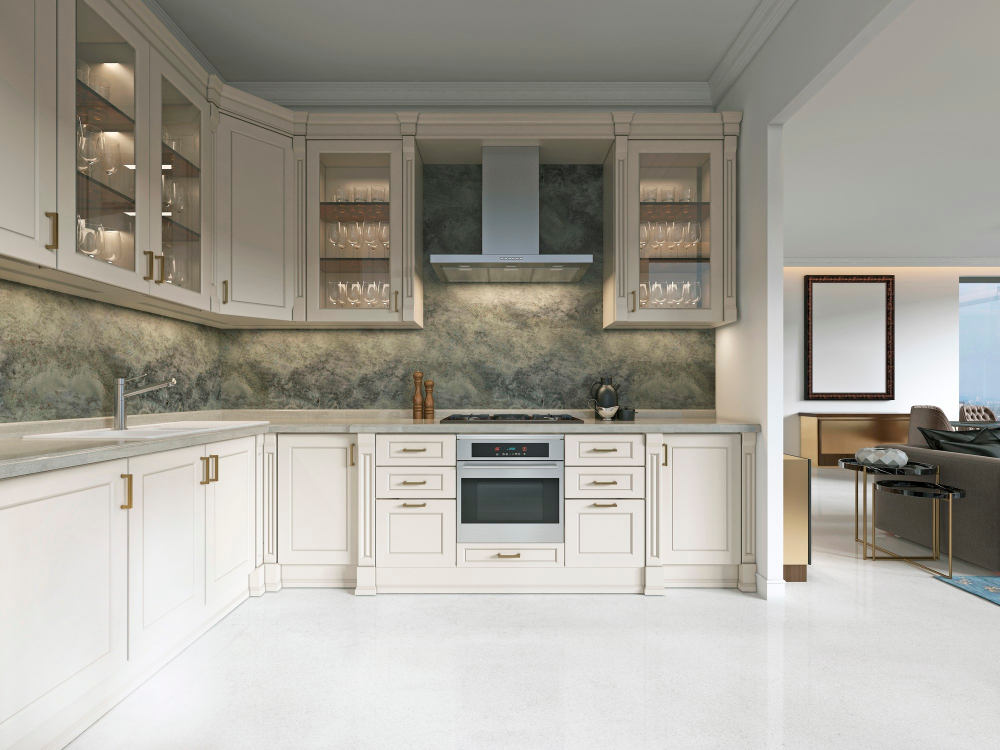
If you’re looking for something different or want to explore other options, there are several crown molding alternatives that can achieve the same effect.
One alternative is using trim pieces such as baseboard or chair rail moldings. These types of moldings can be used in place of traditional crown molding and still provide a finished look.
They come in various sizes and styles, making it easy to find one that complements your cabinet design.
Another option is adding decorative brackets or corbels under the upper cabinets instead of installing crown molding on top. This creates an eye-catching detail while also providing support for heavier items placed on the shelves.
If you prefer a more modern look, consider using metal strips instead of wood moldings. Metal strips offer clean lines and sleek finishes that complement contemporary kitchen designs perfectly.
Crown Molding Size For 8ft Ceiling
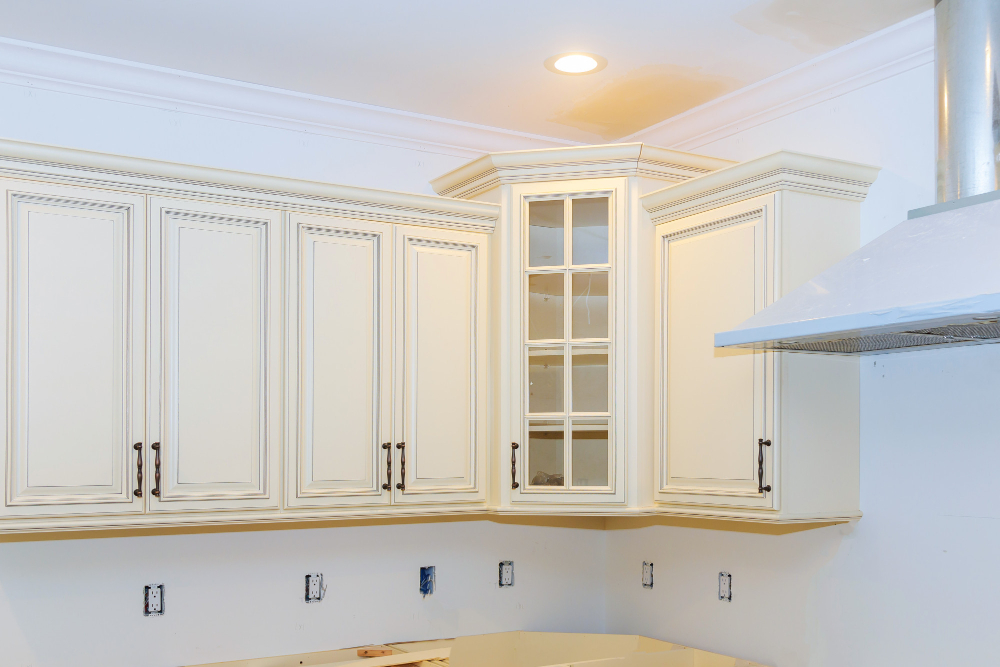
The general rule of thumb for an 8ft ceiling is to use a smaller crown molding size that ranges from 2-4 inches in height. This will help create a cohesive look without overpowering the room’s limited vertical space.
When selecting your crown molding, consider both width and depth measurements as well. A thinner profile with less depth can make ceilings appear higher than they are while still adding visual interest and elegance to your cabinets.
It’s also important to keep in mind that cabinet style plays a significant role when it comes to selecting appropriate sizes of crown moldings for kitchen cabinets with lower ceilings like those at eight feet high. For instance, if you have flat-panel cabinetry or shaker-style doors on your cabinets, then using larger-sized crowns may not be suitable since these styles tend towards simplicity rather than ornate designs.
Crown Molding On Cabinets Size For 9 Foot Ceiling
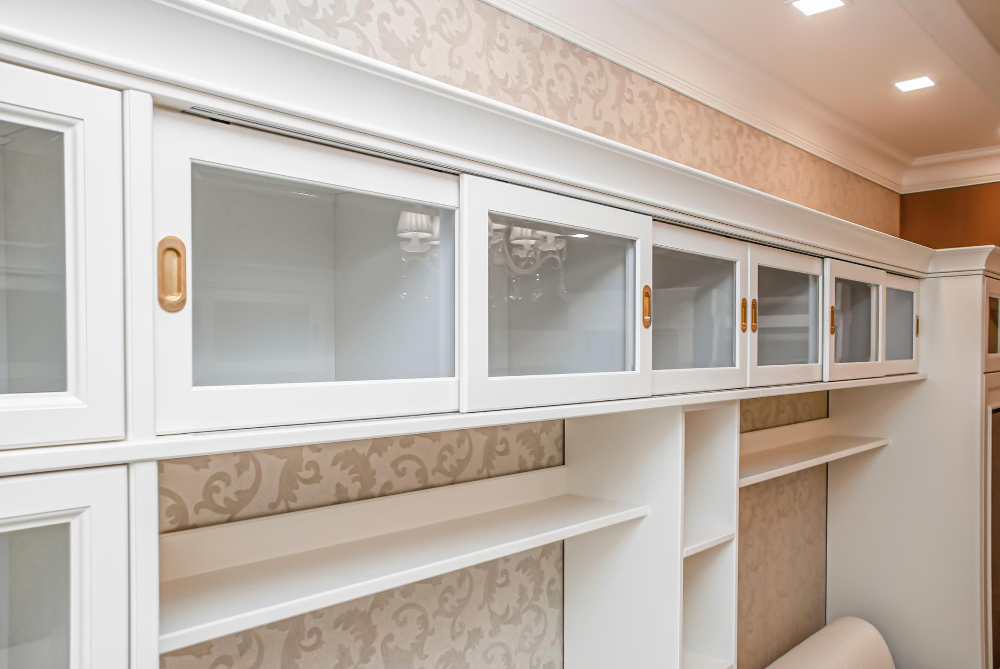
You want to make sure that the crown molding complements the height of your ceiling without overwhelming it. The general rule of thumb is to use larger crown moldings for higher ceilings and smaller ones for lower ceilings.
For a 9-foot ceiling, we recommend using a crown molding with a depth between 4-6 inches and width between 2-3 inches. This will create an elegant look that adds visual interest without overpowering the space.
It’s also important to consider other factors such as cabinet style and design when selecting the perfect size of crown molding for your kitchen cabinets. For example, if you have sleek modern cabinets, then opting for simple straight-lined moldings may be more appropriate than ornate designs.
Ultimately, choosing the right size of Crown Molding on Cabinets Size For A Nine Foot Ceiling comes down to personal preference and what works best with your overall kitchen aesthetic. Take time to explore different options before making any final decisions so that you can achieve an end result that truly reflects who you are as well as enhances both functionality and beauty in equal measure!
FAQ
How wide should cabinet crown molding be?
The cabinet crown molding should be a minimum of 4″ wide for casual spaces, at least 9″ wide for formal spaces, and up to 24″ in height for a full entablature (cornice + picture mold) in some cases.
How do I choose crown molding for kitchen cabinets?
To choose crown molding for kitchen cabinets, match a simple molding with a simple door style and a more detailed crown with a more detailed door style.
What size crown molding for upper cabinets?
For upper cabinets, a 36″ cabinet requires a 3-4″ crown molding, a 42″-48″ cabinet needs a 4-5″ crown molding, and a 54″ and up cabinet requires a 5-7″ crown molding or stacked.
How do I know what size crown molding to get?
Determine crown molding size by ceiling height: for less than 8 feet, select a molding that projects onto the ceiling; for 8 feet, choose between 3 and 5 ¾ inches; for 9 to 10 feet, choose between 4 ¼ and 7 inches; and for greater than 10 feet, select a crown taller than 7 inches.
What factors should I consider when selecting crown molding size for my kitchen cabinets?
When selecting crown molding size for your kitchen cabinets, consider factors such as ceiling height, cabinet height, room size, and surrounding architectural details.
How does the height of the kitchen ceiling affect crown molding size choice?
The height of the kitchen ceiling affects crown molding size choice as larger moldings are preferred for higher ceilings, while smaller moldings are suitable for lower ceilings.
Are there any specific crown molding styles that work better with particular cabinet designs?
Yes, crown molding styles that complement the design and proportions of the cabinets, such as traditional moldings for classic cabinets or sleek and minimal moldings for contemporary designs, work better with particular cabinet designs.
